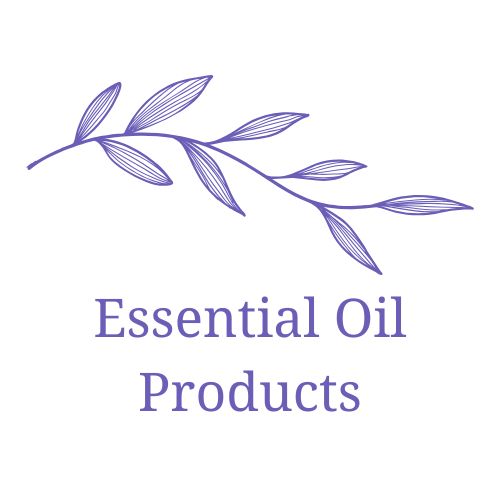Your cart is currently empty!
Essential Oils: A Comprehensive Guide to Aromatherapy and Wellness
Essential Oils: A Comprehensive Guide to Aromatherapy and Wellness
Essential oils have been a part of human culture for thousands of years, known for their aromatic and therapeutic properties. Derived from plants, these concentrated oil extracts have played significant roles in health, wellness, and beauty. This comprehensive guide will explore the history of essential oils, methods of extraction, benefits, and various applications, particularly in aromatherapy.
The Rich History of Essential Oils
The use of essential oils dates back to ancient civilizations. The Egyptians utilized essential oils in their embalming processes, while the Chinese and Greeks integrated them into their medicinal practices. Historical texts reveal that essential oils were used for both their fragrance and therapeutic properties.
In ancient India, Ayurvedic medicine extensively incorporated botanical extracts, laying the groundwork for modern aromatherapy. The rise of the oil industry began during the Middle Ages when distillation techniques were refined, leading to more concentrated essential oils. With the advent of modern science, research into the chemical composition of essential oils has expanded our understanding and utilization of these fascinating compounds.
Extraction Methods
Understanding how essential oils are extracted can provide insight into their quality and effectiveness. There are several common methods:
- Steam Distillation: This is the most common method, where steam passes through plant material. The heat causes the plant’s essential oils to evaporate, and these vapors are then condensed back into liquid form.
- Cold Press Extraction: Mainly used for citrus oils, this method involves mechanically pressing the peels of fruits to release their oils without applying heat.
- Solvent Extraction: In this method, chemical solvents are used to dissolve the essential oils from plant materials. The solvent is later evaporated, leaving behind the pure oil.
- CO2 Extraction: Utilizing carbon dioxide under high pressure, this method creates a highly concentrated oil. It preserves more of the aromatic compounds than steam distillation.
Each extraction method imparts unique characteristics to the essential oil, affecting its scent and therapeutic properties.
Benefits of Essential Oils
Essential oils boast numerous benefits that extend beyond fragrance. Their applications span various fields, including aromatherapy, healthcare, and personal care. Here are some of the widely recognized benefits:
- Emotional Well-being: Many essential oils, such as lavender and bergamot, are known for their calming properties, helping to reduce stress and anxiety.
- Physical Health: Oils like eucalyptus and tea tree have anti-inflammatory and antibacterial properties, aiding in respiratory health and fighting infections.
- Skincare: Essential oils such as frankincense and tea tree are popular in skincare routines for their regenerative and antibacterial effects.
- Sleep Aid: Oils like chamomile and lavender are commonly used to promote relaxation and improve sleep quality.
With their extensive range of applications, essential oils have become versatile tools in promoting overall wellness.
Aromatherapy Techniques
Aromatherapy involves using essential oils for therapeutic benefits. Here are popular techniques to consider:
- Diffusion: This involves dispersing essential oils into the air using a diffuser. It can create a calming ambiance and purify indoor air.
- Topical Application: Essential oils can be applied directly to the skin, often mixed with carrier oils such as coconut or jojoba oil. This method is suitable for localized treatment.
- Inhalation: Direct inhalation from the bottle or a cotton ball allows for a quick way to experience the calming or invigorating effects of essential oils.
- Bathing: Adding essential oils to baths can enhance relaxation and rejuvenation. Be sure to dilute them properly to avoid irritation.
When practicing aromatherapy, it’s crucial to understand the specific properties and appropriate uses of different essential oils to maximize their benefits.
Safety Guidelines for Essential Oils
While essential oils offer a variety of benefits, safety is paramount. Here are essential guidelines to follow:
- Patch Test: Conduct a patch test before applying essential oils to the skin to check for allergic reactions.
- Dilution: Always dilute essential oils with a carrier oil for topical application to reduce the risk of skin irritation.
- Consultation: It’s advisable to consult with a healthcare provider, especially for pregnant women and individuals with health conditions.
- Storage: Store essential oils in dark glass bottles in a cool, dry place to maintain their potency.
Adhering to these safety measures can enhance your experience and efficacy when using essential oils.
Top 10 Essential Oils Every Home Should Have
Creating your essential oil collection can be an exciting adventure. Here are ten essential oils that are considered must-haves, each with unique benefits and applications:
- Lavender: Known for its calming properties, it’s perfect for promoting relaxation and sleep.
- Tea Tree: Highly regarded for its antibacterial and antifungal properties, great for skin issues.
- Peppermint: Offers relief from headaches and boosts energy levels.
- Eucalyptus: Supports respiratory health and has a refreshing scent.
- Lemon: Uplifting and purifying, commonly used in cleaning products.
- Frankincense: Valued for skin rejuvenation and grounding effects.
- Sweet Orange: Cheerful and refreshing, effective in reducing stress.
- Chamomile: Great for relaxation and alleviating skin irritations.
- Rosemary: Often used for enhancing cognitive function and memory.
- Clary Sage: Known for its calming effects, especially beneficial for women’s health.
These essentials can form the foundation of a versatile collection, catering to varying needs throughout your home.
Embracing the world of essential oils opens up a treasure trove of possibilities for enhancing well-being and creating a therapeutic environment. With appropriate knowledge and practice, essential oils can contribute significantly to a healthier lifestyle while adding delightful fragrances to our lives. Whether you’re looking to improve emotional health, physical wellness, or simply wish to enjoy the aromatic experience, essential oils remain an invaluable asset in today’s fast-paced world.

Leave a Reply